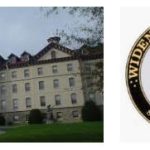Oceania is the smallest continent on Earth, with an area of 8,526,462 square kilometers. This portion of the globe is the second least inhabited on the planet – only Antarctica has a smaller population. The total population of Oceania is approximately 36.6 million residents, corresponding to 0.5% of the world population. The demographic density (relative population) is only 4.3 residents per square kilometer.
The continental population is unevenly distributed across the 14 countries. Australia, the largest continental nation, is home to around 60% of the residents of Oceania – the country is inhabited by 21,292,893 people, according to a count made in 2009. Papua New Guinea (6.7 million residents) and New Zealand (4, 2 million) are the other populous nations of Oceania.
On the other hand, the other 11 continental nations have a population contingent of less than 1 million residents. Nauru, for example, is inhabited by only 9,771 people. Tuvalu (11,100 residents) and Palau (20,000) are other sparsely populated countries in Oceania.
In addition to the territorial extension, another factor that influences this irregular distribution of the population of Oceania is the level of economic development. New Zealand and Australia have a high degree of industrialization, a fact that triggers migratory flows to these countries, thus increasing the population.
Population of Oceania countries:
Australia: 23,630,169 residents.
Fiji: 887,027 residents.
Marshall Islands: 52,772 residents.
Solomon Islands: 572,865 residents.
Kiribati: 103,942 residents.
Nauru: 10,081 residents.
New Zealand: 4,551,349 residents.
Palau: 21,097 residents.
Papua New Guinea: 7,476,178 residents.
Samoa: 191,831 residents.
Tonga: 105,782 residents.
Tuvalu: 9,854 residents.
Vanuatu: 258,301 residents.
If you consider pursing a law degree and decide to study in Australia or New Zealand, then you’ve come to the right place. Here, we provide rankings for all law schools in Oceania based on alumni reviews, graduate employment rate, faculty and student ratio, admissions acceptance rates, etc. In addition to the Oceania rankings, you can also see where each school is ranked world wide.
Among 23 top ranked law schools, 4 are found in New Zealand, including University of Auckland, Victoria University of Wellington, University of Canterbury, and University of Otago. All of the remaining 19 programs are from Australia, including the most prestigious universities – University of Melbourne, University of Sydney, and Australian National University. For detailed rankings of all law schools in Oceania, please see the following table.
| Oceania Rankings | World Rankings | Law School | Nation |
| 1 | 6 | The University of Melbourne | Australia |
| 2 | 12 | The University of Sydney | Australia |
| 3 | 14 | The University of New South Wales (UNSW Sydney) | Australia |
| 4 | 15 | The Australian National University | Australia |
| 5 | 31 | Monash University | Australia |
| 6 | 43 | The University of Queensland | Australia |
| 7 | 44 | The University of Auckland | New Zealand |
| 8 | 68 | The University of Adelaide | Australia |
| 9 | 72 | The University of Western Australia | Australia |
| 10 | 92 | University of Technology Sydney | Australia |
| 11 | 97 | Victoria University of Wellington | New Zealand |
| 12 | 108 | Macquarie University | Australia |
| 13 | 118 | Queensland University of Technology (QUT) | Australia |
| 14 | 136 | University of Canterbury | New Zealand |
| 15 | 142 | University of Otago | New Zealand |
| 16 | 156 | Deakin University | Australia |
| 17 | 157 | Griffith University | Australia |
| 18 | 198 | University of Wollongong | Australia |
| 19 | 212 | La Trobe University | Australia |
| 20 | 255 | Bond University | Australia |
| 21 | 282 | University of Canberra | Australia |
| 22 | 296 | University of Tasmania | Australia |
| 23 | 301 | Western Sydney University | Australia |
Unfortunately, there are no top ranked law universities from other 12 countries in Oceania, as listed by Countryaah.
Australian Literature
Australia’s written literature is of late date. Parts of the myths and songs of the indigenous people – Australians – preserved in oral tradition are now available in translation, thanks to the workings of anthropologists and linguists. Expressed from his context of cult, tradition and music, however, this poetry is difficult to understand. Content and features vary from one geographical area to another, but a recurring element is the so-called dream time, its heroes and rites (see Australian religion).
The earliest written documents were added during the colonization period that began with Arthur Phillips’s ascent in 1788 with the first load of prisoners. They mainly consist of diaries and travelogues that convey impressions of the captive colonies, the new country, its residents, wildlife, etc.
Popular folk songs and ballads from England were patterned in New South Wales until the 1820s, when instead typical Australian ideals began to be asserted: pioneering spirit, camaraderie, equality and democracy in association with some anti-authoritarian insurgency. The first Australian-born poet, Charles Harpur, delivered his message in the context of traditional English apology. Nevertheless, together with Adam Lindsey Gordon (author of “Bush Ballads and Galloping Rhymes”, 1870), he and the lyrical landscape painter Henry Kendall became the forerunner of later more nationalist-oriented poets. The early prose depictions are characterized by intriguing intrigue and little credible portrayal. Two classics can be mentioned: Marcus Clare’s pessimistic and melodramatic, semi-documentary novel about the cruel existence of the prisoners, “His Natural Life” (1870), and Rolf Boldrewood’s (pseudonym for Thomas Alexander Browne) adventure story about straw robbers and gold diggers, “Robbery Under Arms” (1882). Both have been translated into several languages, dramatized and filmed.
A nationalist period began in 1880 with the founding of the outspoken literary journal Bulletin, whose purpose was to accentuate the typically Australian in subject choices, attitudes and languages and to assert democratic-nationalist values. The Bulletin School idealized life in the wilderness, “the Bush”, and camaraderie, “mateship”. Its principal representative, Henry Lawson, portrayed in the short stories and poems the isolation and hardships of the desolate, magnificent landscape, but also the community and solidarity between its residents. Similar themes and ideals are met by Andrew Barton “Banjo” Paterson, whose “Waltzing Matilda” still serves as the unofficial national anthem. Bulletin published in 1903 a classic, Joseph Furphy’s (pseudonym Tom Collins) experimental and humorous novel “Such is Life”.
The time before the First World War was marked by the search for national identity of the state federation, the Commonwealth of Australia, formed in 1901. The authors sought to formulate the continent’s traditions and characteristics and expressed varying attitudes to Europe and the old motherland. The first humanist and academic in Australia’s literature, Christopher Brennan, was inspired by French poetry and followed contemporary European development, while socialist poet Bernard O’Dowd predicted an Australian golden age of old world radicalism transplanted into the new. Historical and national themes also occur in the period’s foremost novelist, Henry Handel Richardson (pseudonym of Ethel Richardson), best known for his trilogy about Richard Mahony, also translated into Swedish. Among the wartime novelists deserve mention are Katharine Susannah Prichard, Vance Palmer and Miles Franklin, all with a genuine sense of the country’s specific environment and culture. At the same time, internationally prominent writers such as Christina Stead and Martin Boyd appeared. The most significant poets of the period, intellectual and modernist in their appearance, were Kenneth Slessor and Robert D. FitzGerald.
The Second World War, the depression and the urbanization brought a shift in emphasis from the general to the individual, from “the Bush” to the metropolitan environment, from the realistic and material to the symbolic and religious. The literature became more sophisticated, and in the 1940s and 1950s poetry flourished with names such as Francis Webb, Judith Wright, Douglas Stewart, James McAuley and Alec Derwent Hope. However, the foremost representative of Australia’s literature from the 1950s onwards is Patrick White, who in 1973 was awarded the Nobel Prize “for an epic and psychological storytelling art that introduced a new continent into literature”.
Other novelists who, like White, deal with moral and metaphysical issues are Christopher Koch, Randolph Stow and Thomas Keneally. Xavier Herbert’s career, started with “Capricornia” (1938), ended with “Poor Fellow My Country” (1975), the longest novel published in Australia. Also significant in the genre are Hal Porter, David Malouf and Thea Astley. Morris West and Nevil Shute, like Colleen McCullogh, author of “The Birds of Thorns” (1977), have gained a large international readership. Particularly noted by Aboriginal authors Kath Walker and her collection of poems “We Are Going” (1964). She deals with the loss of cultural identity of the indigenous people in modern society, a warning and a call to the whites in Australia. We meet the same trends with the novelist Colin Johnson.
Only in recent decades has Australian drama been successfully played in Europe. Leading playwrights include Patrick White, Ray Lawler, David Williamson and Alan Seymour. Leading poets during the 1960s and 1970s were mainly Les A. Murray, Bruce Dawe and Peter Porter.
Ever since Ethel Turner’s classic children’s book “Seven Siblings” was published in 1894 and translated into 17 languages, Australian books for children and young people have asserted themselves well internationally through, among other things. Ivan Southall, Patricia Wrightson and Colin Thiele.








